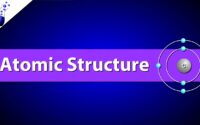Gravitation Class 9 Notes | Science | Term 2 | Questions Answers |
Table of Contents
Gravitation | Class 9 Notes | Science | Term 2 |
When a body is thrown up it reaches a certain height and then falls down. The downward pull of the Earth on the body decreases its velocity in the upward direction to zero at some height as a result the body cannot rise further. This is therefore considered the maximum height. The same download pull of Earth on the body makes it fall downward from the maximum height. A famous law, i.e., universal law of gravitation was postulated by Newton based on these findings in 1687. This law is also known as Newton’s law of gravitation.
Universal Law of Gravitation
According to this law the force of attraction that is present between any two bodies is directly proportional to product of their masses and varies inversely proportional to the square of distance between the bodies.
Consider two bodies A and B having masses m1 and m2 respectively placed at distance R apart.
F ∝ m1m2
F ∝ 1/R2
F ∝ m1m2 / R2
F= Gm1m2 / R2
Here G is universal gravitational constant
This law is also known as inverse square Law since the magnitude of force varies inversely with the square of the distance between the two particles.
G = FR2 / m1m2
SI unit of G is Nm2kg-2
The value of G is 6.67 × 10-11 Nm2kg-2
Gravitational force between two bodies objects does not need any contact between them.
Gravitational force between two bodies form an action reaction pair.
Importance of Universal Law of Gravitation is discussed as below:
- Responsible for binding us to the earth
- The motion of moon around the earth.
- The motion of earth around the sun.
- Occurrence of tides
- Existence of solar system.
- Rainfall and snowfall
- Flow of water in rivers
- Holding the atmosphere near the surface of Earth.
Kepler’s Law of Planetary Motion
Johannes Kepler derived three laws that decide the motion of the planets. These laws are considered as Kepler’s laws.
Kepler’s first law of motion
Each planet moves around the sun in an elliptical orbit wherein the sun is situated at one of the foci of orbit. This Law is also known as law of orbits.
Kepler’s second law of motion
Equal area is sweeped out in equal interval of time by the line joining the sun and the planet. This law is also known as law of areas.
Kepler’s third law of motion
The square of the total time taken by a planet in order to complete a revolution around the sun is directly proportional to cube of semi major axis of the elliptical orbit. This law is also known as law of periods. T2 ∝ r3
Free fall
The motion of the body towards the earth were no other force accept the force of gravity on it is called as free fall. Thus, all the freely falling bodies lighter or heavier fall towards the earth with the same acceleration.
Acceleration due to Gravity of the Earth
The acceleration produced in a body due to the gravitational pull of earth near its surface is called acceleration due to gravity of the earth. The gravitational force acting on a body of mass m near the surface of earth is given as
F = GMm / R2 ….(1)
Here m is the mass of the body
M is the mass of the earth
R is the radius of the earth
If g is acceleration produced in the body of mass m then
F = m g…..(2)
Equating (1) and (2)
g = GM / R2
It does not depend on the mass of the falling body.
Its SI unit is ms-2.
Calculation of acceleration due to gravity is as follows:
G = 6.67 × 10-11 Nm2kg-2
M= 6 × 1024 kg
R = 6.4 × 106 m
g = 6.67 × 10-11 × 6 × 1024 / ( 6.4 × 106)2
g = 9.8 ms-2
Variation of Acceleration due to Gravity
- Earth is not a perfect sphere. Its shape is considered as geoid. The radius of the earth increases as we go from pole to the equator. Since acceleration due to gravity varies inversely to the square of radius does acceleration due to gravity is greater at poles than at equator.
- Hence, the value of g is not constant at all places on the surface of Earth.
- The formula of acceleration due to gravity is not applicable at any point inside the surface of Earth.
- The value of g decreases as we go down inside the surface of Earth.
- Value of g becomes zero at the centre of earth.
Difference between Acceleration due to Gravity and Universal Gravitational Constant
| Acceleration due to gravity (g) | Universal gravitational constant |
| It is the acceleration acquired by a freely falling body due to Earth’s gravitational pull on it. | It is equivalent to force of attraction between two bodies of mass 1 kg each that are separated by a distance of 1 m. |
| Its value varies at variable places on surface of Earth. | It is a Universal constant thus its value is same everywhere in the universe. |
| It is a vector quantity. | It is a scalar quantity. |
| At the centre of the earth its value is zero. | Its value is not zero at centre of earth or anywhere else. |
Equations of Motion for Body Moving Under Gravity
The value of acceleration due to gravity changes with height above the Earth’s surface. The motion of the body under Gravity near the Earth’s surface is a uniformly accelerated motion. Following are the equations of motion for a freely falling body:
v = u + gt
h = ut + 1/2 gt2
v2 – u2 = 2gh
Here h height above the surface of Earth
g is acceleration due to gravity
v and u are final and initial speed respectively.
In case when the body is thrown vertically upward then acceleration due to gravity is taken negative (-g).
Mass and Weight
Mass
- It is simply the quantity of matter contained in a body and is the measure of the number of atoms contained in any body. Since the number of atoms in an object remain constant hence its mass also remains constant.
- It is a scalar quantity
- Its SI unit is kg
- It does not depend on the shape and size of the body
- It can easily be measured with the help of a common balance.
- It does not change from place to place.
Weight
- It is the force with which a body is attracted by the earth. The weight of a body on the earth is equal to the force of gravity exerted by the Earth on that body.
- W = mg
- It is a vector quantity.
- Its SI unit is Newton.
- The weight of a body change changes with the value of acceleration due to gravity.
- Its value is higher at poles than that at equator.
- It can easily be measured with the help of a spring balance.
- The weight of the body is different on different planets.
Weight of an Object on the Surface of Moon
The value of acceleration due to gravity on moon is 1/6 of that on the surface of the earth.
As we know the weight of an object changes as the value of acceleration due to gravity changes.
Hence the weight of an object on the surface of moon will also be one sixth of weight of an object on the surface of Earth.
For this reason moon exerts less force of attraction on object.
Questions / Answers of Gravitation
Question 1: What happens to the force between two objects if the distance between the objects is doubled?
Answer: We know F = G Mm / R2
If the distance between the two objects is doubled then R’ = 2R
Let the new force be F’
F’ = GMm / (2R)2
F’ = GMm / 4R2
F’ = F /4
Hence force become 1 by 4 times the original force.
Question 2: If the mass of an object on the surface of earth is 10 kg then what will be its weight on Earth?
Answer: m = 10 kg
g = 9.8 ms-2
We know, W = mg = 98 Newton
Question 3: If the small and big stone is dropped from the roof of a same house simultaneously then they will reach the ground at the same time. Give suitable reason.
Answer: The acceleration due to gravity does not depend on the mass of the stone. Both the bodies will fall with the same acceleration towards the surface of the earth. As a result both the stones will reach the ground at the same time when dropped simultaneously.
Question 4: If a stone is dropped from the edge of a roof then find the time taken by it in order to fall 4.9 m ?
Answer: Since the stone is dropped its initial velocity will be o
u = 0 , h = 4.9 m , g = 9.8 ms-2, t = ?
h = ut + 1/2 gt2
4.9 = 1/2 (9.8t2)
t = 1 second.
The time taken by stone to fall 4.9 metre is 1 second.
Question 5: The mass of an object on the surface of earth is 60 kg. What would be its weight when it is measured on the surface of the moon? Find the mass of the object on the surface of the moon?
Answer: Its mass on the surface of the moon will remains same 60 kg.
weight on the surface of the moon = 1/6 ( 60 × 10) = 100 N
Weight on the surface of the moon will be 100 Newton
# Gravitation Class 9 Science Notes
# Gravitation Class 9
Do share this post if you liked Gravitation Class 9 Notes. For more updates, keep logging on BrainyLads.



